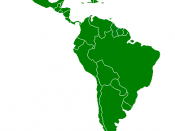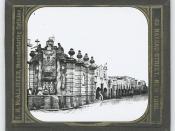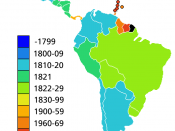I INTRODUCTION.
Latin American Painting, painting produced after the arrival of Spanish and Portuguese colonists in South America, Central America, and Mexico. The blend of European and indigenous (native) American cultures that characterizes Latin America today began to develop in the late 15th century. The Latin American artistic tradition was founded upon ancient, highly developed pre-Columbian civilizations, most notably those of the Aztec and Maya in Mexico and the Inca in Peru (see Pre-Columbian Art and Architecture).
The Native American artistic traditions that European colonists encountered dated back centuries. Native painting traditions included manuscript illuminations; brilliantly colored, large-scale murals that decorated temples and illustrated historical events and ceremonies; and works of art in exotic media such as iridescent feathers. The strength of these traditions, along with the patronage of indigenous rulers and the numerical superiority of native peoples, ensured that colonial painting--at least initially--did not reflect European models alone but rather represented a mixture of European and indigenous artistic values.
However, after about 1600, as the continued arrival of new settlers expanded the European presence, artistic styles increasingly reflected European models, especially in the urban centers.
The overall structure of colonial art history is remarkably similar throughout Latin America, despite the enormous geographic area and the diverse traditions it encompasses. Most regions experienced similar stages from early colonial art to modern art, although the timetable varied greatly with location; some areas became colonized too late to experience the full sequence of stages. In addition Brazil, because it formed part of the vast Portuguese empire that extended to Africa and the Indian subcontinent, departed from the Hispanic pattern in many respects. Because the Portuguese imported large numbers of Africans to supplement native labor in Brazil, Brazilian culture became a blend of the cultures of three continents: Africa, South America, and...


